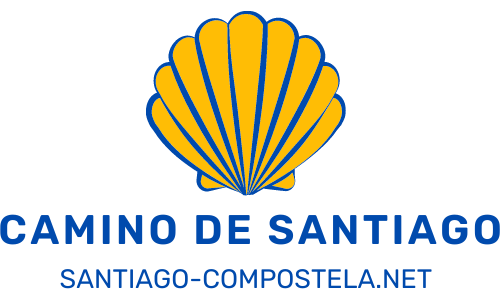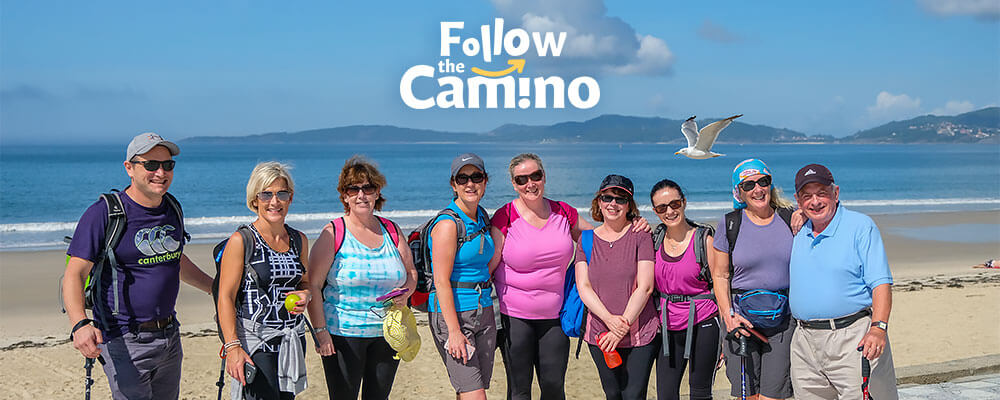From Porto to Santiago de Compostela (240 km)
The Portuguese Way is the second most popular Camino in terms of the number of pilgrims. While the whole Camino Portugues has its starting point in the capital of Portugal, Lisbon, most pilgrims start their trip in Portugal’s second-largest city, Porto, or in the Portuguese-Spanish border town of Tui.
The stretch from Porto to Santiago has frequent pilgrim hostels and bars on the road and is quite busy with pilgrims. The route from Lisbon to Porto has fewer facilities, and the waymarks are not that good, but it can be done with more preparation.
The entire Camino Portugues from Lisbon to Santiago is 616 kilometers long, but the part that starts in Porto is only 240 kilometers long.
Guided and Self-Guided Tours
Walking or cycling the Camino Portugués through an organized tour is now possible. We recommend contacting our trusted partner, Follow the Camino, to assist you in planning your Camino.
Follow the Camino provides customized/flexible itineraries, comfortable private rooms & bathrooms, luggage transfers, 24/7 support, airport transfers, breakfast & dinners, and other add-ons like food & wine tours, excursions, premium accommodation, etc.
History
The pilgrimage from Portuguese lands to Santiago de Compostela originates in the Middle Ages. Queen Isabel of Portugal also used it in the early 14th century. The route followed the ancient Roman roads of Lusitania closely, but today, on many stretches, you will have to walk along a modern road.
When to go
The Atlantic Ocean influences the weather in northern Portugal and Galicia, and there are many days with heavy rainfalls all year round.
Winter is not a season that is advisable for the Camino Portugues. Besides the weather, some Albergues will be closed for the winter, with fewer facilities overall. However, if you decide to do the Camino in the winter months, you will have an experience all for yourself, especially in the first kilometers.
Spring is a favorite among many as nature grows again and the weather is mild. However, rain can happen anytime throughout the year here, so be prepared accordingly.
Summer is the most popular time to walk the Camino Portugues; the busiest months are July and August. It can get crowded, especially in the latest stages of the Camino, and Albergues might be full.
Autumn is a relatively dry season, and the temperatures don’t drop too low until November; thus, it can be a great time to do the Camino Portugues. It can also be a good time to taste the wine from the region.
Frequent Asked Questions
1. Will we be the only ones doing it? Is it crowded?
The Portuguese section of the route is not much traveled. When we walked it in May 2006, we encountered only three pilgrims between Porto and the Spanish border. Much has changed since then, but it is less crowded than the Frances.
The Spanish section is much more traveled, and you can usually rely on finding company in the refugios and meeting some other pilgrims during the day. But do not think the Camino Portugues has anything like the number of pilgrims on the Camino Francés – that is one of its joys!
2. Is there plenty of accommodation? How much does it cost?
In Portugal, there are a few refugios but they are not always in the right place! They cost a few euros. Alternatives are available, often also not in the right place. Some of the quintas have swimming pools and cost 60 euros or so. You may need some good recommendations for this section.
You can start your itinerary in Porto or Lisbon or from Tui at the border. (try the links to find a stay).
The Spanish section has good refugios more closely spaced than in Portugal.
3. What is the weather like? Does it rain a lot?
What can one say about the weather? In Portugal, it is often very hot indeed. In Galicia, it is very green, which necessarily means that it rains quite often. The weather does not change regularly and predictably through the year: it can be baking hot in March but cold and wet in May – you need to be prepared for both.
4. How is the Camino marked compared with Camino Frances?
The waymarking with yellow arrows on this route is very good.
5. Where do I find the weather conditions for the route?
weather.com will give you 10-day forecasts, but it is primarily a question of taking it as you find it and having enough clothes to keep warm and dry even if the weather isn’t.
Camino Portugues Route
STAGES:

